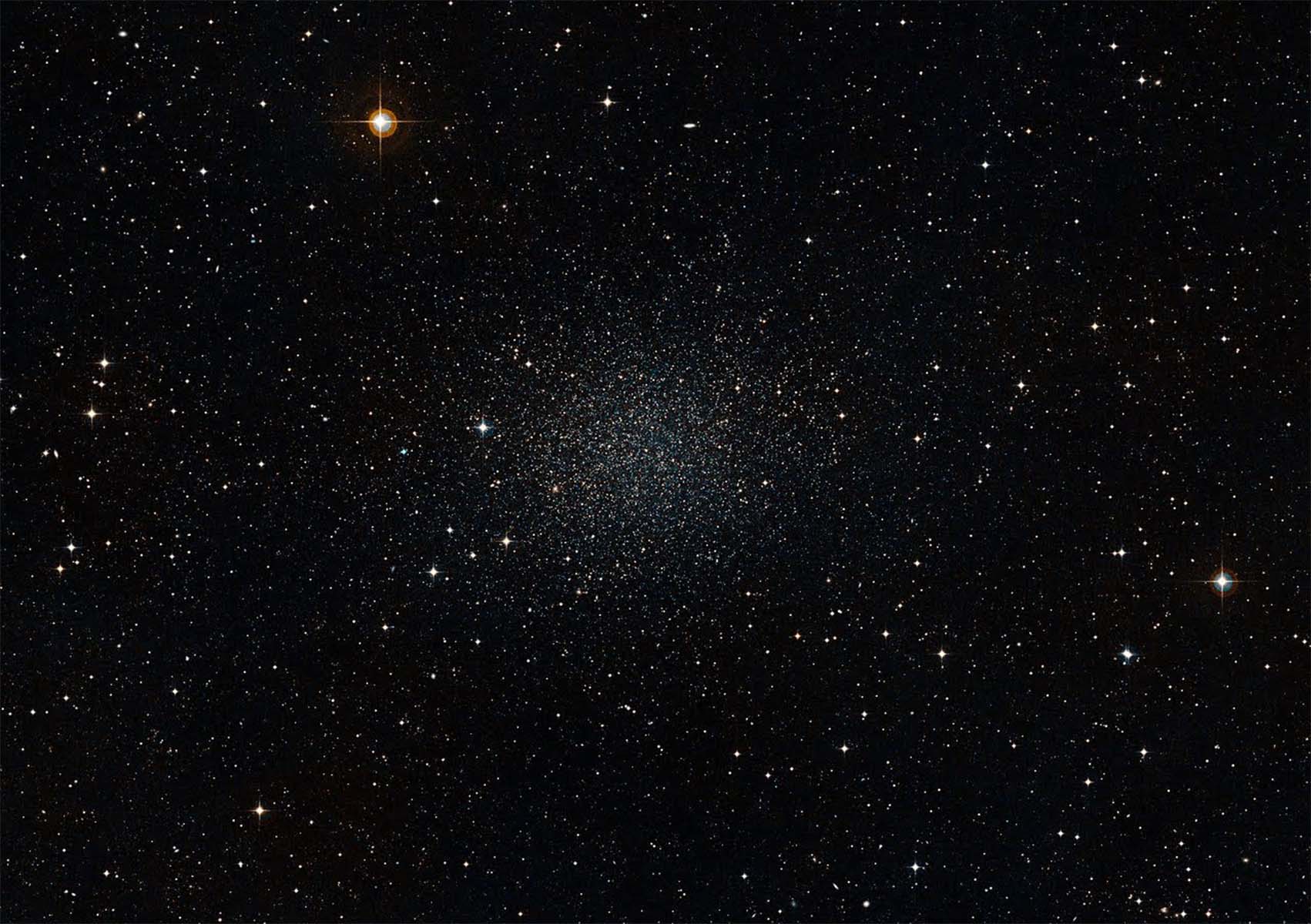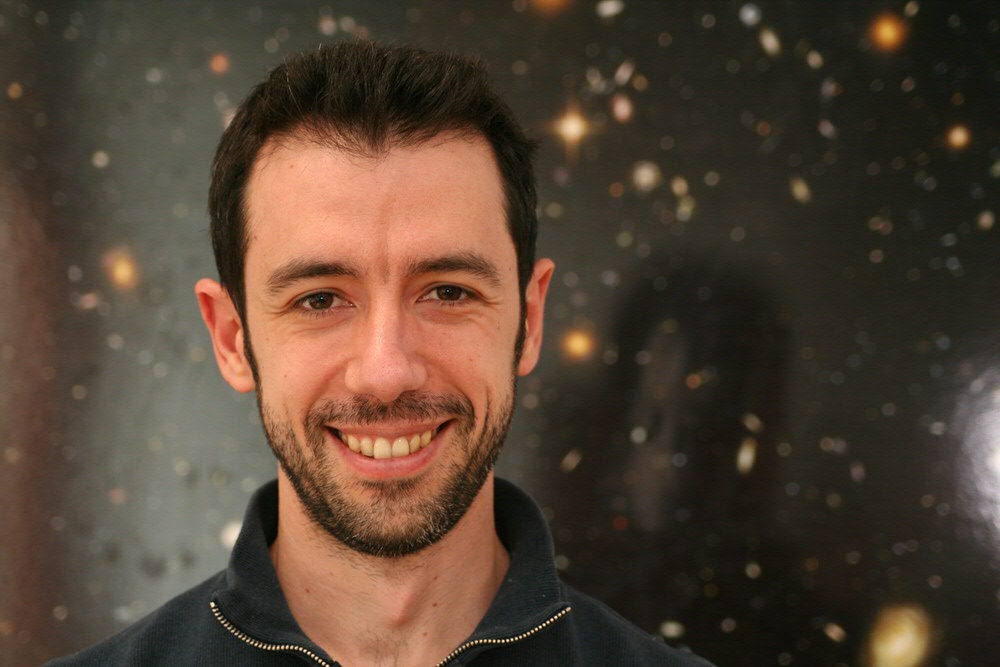Meting 3D-beweging van sterren in stelsel buiten de Melkweg
Een team van astronomen aan de universiteiten van Groningen en Leiden, samenwerkend in NOVA, is er voor het eerst in geslaagd de driedimensionale beweging te meten van individuele sterren in een sterrenstelsel buiten de Melkweg. Het onderzoek geeft een inkijkje in de verdeling van de donkere materie die het stelsel domineert. In het onderzoek werden data van ESA’s Gaia-satelliet gecombineerd met waarnemingen van NASA/ESA’s Hubble-ruimtelescoop van 12 jaar geleden. Het resultaat is op maandag 27 november gepubliceerd in Nature Astronomy.

De astronomen hebben de eigenbeweging (de verplaatsing van de ster aan de hemel ten opzichte van de achtergrondsterren) gemeten van 126 sterren in het dwergsterrenstelsel Sculptor, een klein satellietstelsel van de Melkweg. De 15 sterren met het beste resultaat zijn verder geanalyseerd en daaruit blijkt dat de sterren specifieke banen hebben. Daarmee kunnen de theoretische modellen die de beweging van sterren en halo’s van donkere materie beschrijven, worden aangescherpt.
Precisiemetingen
Astronomen meten de beweging van sterren (de beweging naar ons toe of van ons af) met behulp van de roodverschuiving van het licht (het verschijnsel dat licht naar ‘rood’ – langere golflengten – is verschoven). Om ook de eigenbeweging van sterren te meten, zijn meerdere precisiemetingen over de jaren heen nodig. Dat is exact wat de Gaia-satelliet aan het doen is voor een miljard sterren in onze Melkweg. “Maar Gaia meet ook de posities van sterren in stelsels buiten de Melkweg, zoals het Sculptor-dwergstelsel,” licht eerste auteur Davide Massari van het Kapteyn-instituut van de RUG toe.
Door de Gaia-data te combineren met Hubble-data van 12 jaar geleden, hebben de astronomen nu van 15 sterren extreem nauwkeurige waarnemingen van hun piepkleine eigenbeweging. Het vergelijken van de twee datasets was een enorme uitdaging. Massari: “De twee missies meten ieder op hun eigen manier, en het uitsluiten van systematische fouten was een hele klus.”

Rugbybal
De beweging van sterren is belangrijk in de zoektocht naar onzichtbare donkere materie (het heelal heeft meer dan 5 x zo veel donkere materie als normale materie, zoals de atomen waarvan wij zijn gemaakt). De aanwezigheid van de ongrijpbare donkere materie kan worden afgeleid uit zijn zwaartekrachtseffect op de beweging van andere objecten, zoals sterrenstelsels en sterren. Co-auteur Amina Helmi (Kapteyn-instituut, RUG): “Rugbybalvormige dwergsterrenstelsels zoals Sculptor worden van alle objecten in het heelal het meest gedomineerd door donkere materie. In deze stelsels ‘zien’ we donkere materie aan het werk. Uit de nieuwe data blijkt dat de sterren bij voorkeur in langgerekte banen bewegen. Dat is consistent met een verdeling van donkere materie waarbij de dichtheid groeit richting centrum, in plaats van afneemt. Precies wat wordt voorspeld door simulaties op basis van het standaard kosmologische Cold Dark Matter-scenario.”
De data komen uit de eerste Gaia-dataset; de tweede zal in april 2018 worden gepubliceerd. Volgens de Leidse astronoom Anthony Brown (coauteur en leider van het Gaia-data-analyseconsortium DPAC) kan de tweede Gaia-dataset worden gebruikt om de beweging van Sculptor en andere dwergstelsels rond de Melkweg in ongekende nauwkeurigheid te meten. Afgelopen week heeft ESA de Gaia-missie met 18 maanden verlengd, waardoor de ‘billion star mapper’ nog tot zeker eind 2020 operationeel blijft.
---------------------------------------------------------------------------------------------------
Meer informatie
Kapteyn Instituut, Rijksuniversiteit Groningen:
-
Davide Massari, e-mail: massari rug.astro.nl , tel: 050-3634094
-
Amina Helmi, e-mail: ahelmi rug.astro.nl , tel: 050-3634045/0643041424
Artikel: D. Massari, M. A. Breddels, A. Helmi, L. Posti, A. G. A. Brown en E. Tolstoy: Three-dimensional motions in the Sculptor dwarf galaxy as a glimpse of a new era. Nature Astronomy 27 November 2017. DOI 10.1038/s41550-017-0322-y

Meer nieuws
-
11 december 2025
Stormachtige planeten en een onverwachtse atmosfeer
-
09 december 2025
RUG-hoogleraar bij COP30: ‘Het is altijd drama’
